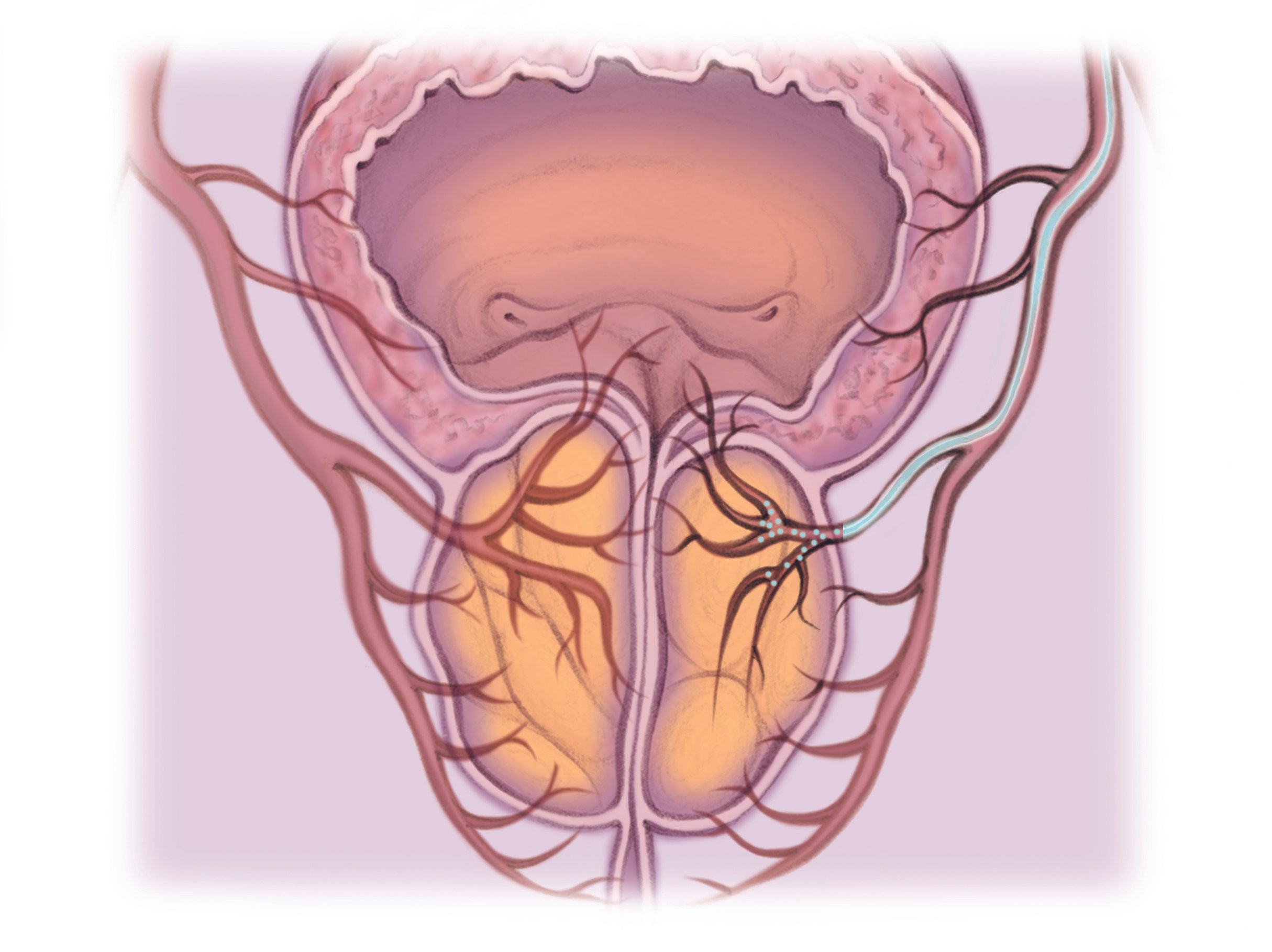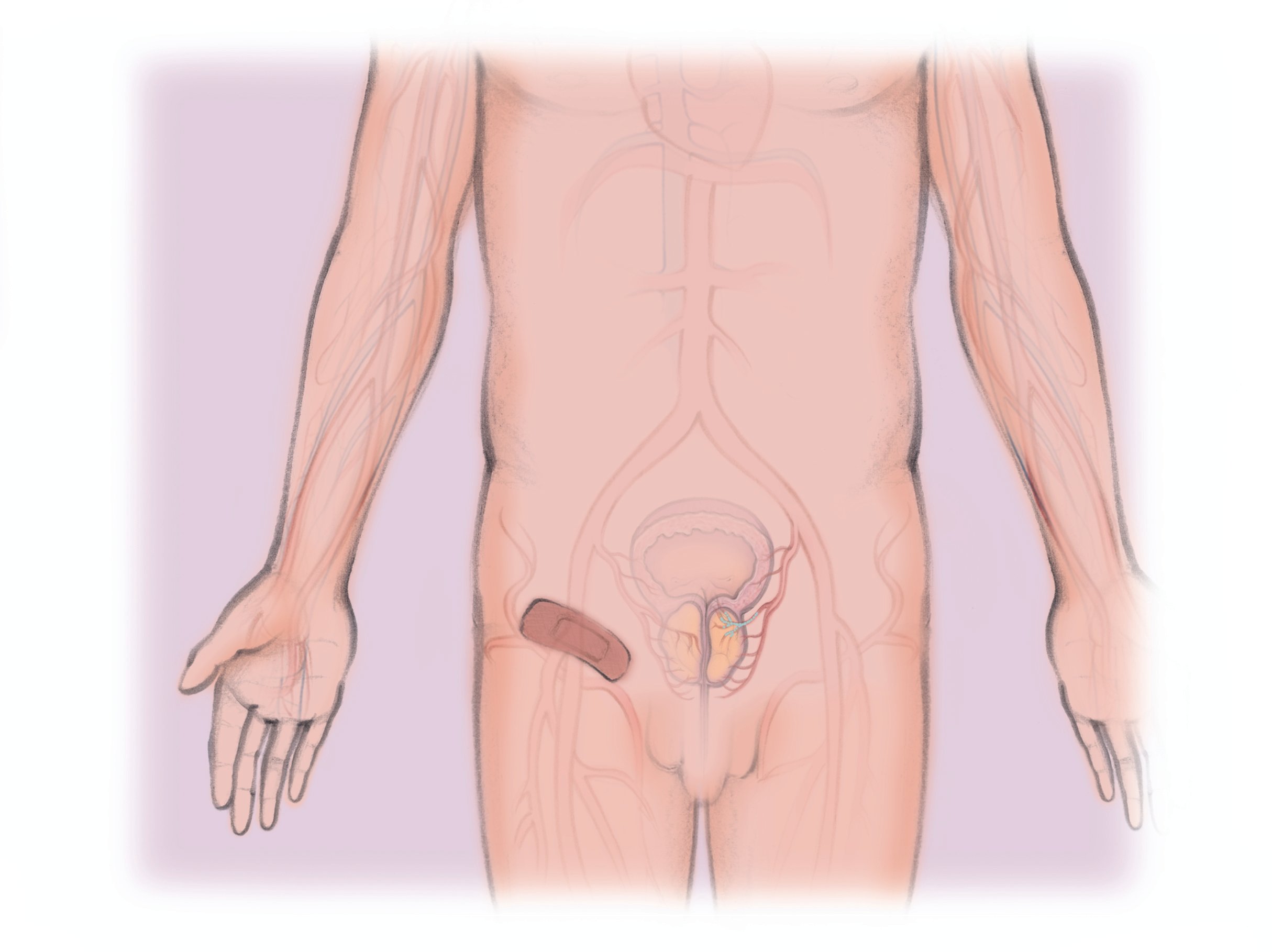What is Prostate Artery Embolization?
Benign Prostatic Hyperplasia (“BPH”) is when an otherwise normal prostate grows large. It is not cancer. A large prostate makes it hard to pass urine. Because it is hard to empty the bladder, a man with an enlarged prostate has to go to the bathroom more often, including at night.
BPH is very common. It occurs in about half of men 51-60 years old and more than 4 in 5 men over the age of 80.
Prostate Artery Embolization (PAE) is a minimally invasive way of treating BPH by shrinking the prostate.
How is Prostate Artery Embolization done?
PAE is performed by a doctor called an Interventional Radiologist, or IR. The IR inserts a small tube through a blood vessel at the top of the thigh (or wrist). Moving x-rays help the IR guide the tube into the blood vessels feeding the prostate. Next, the IR injects tiny beads through the tube. The beads decrease the prostate’s blood supply, causing it to shrink.
Prostate Artery Embolization
1. After numbing the skin, a small tube is placed into the blood vessel at the top of the thigh or wrist.
2. Using moving x-rays, the clinician will guide the tube to the blood vessel in the prostate and inject special material to block the blood vessel.
3. Once the blood vessel is blocked, the clinician removes the tube and places a bandage over the pinhole in the skin.
What are the risks?
Many people experience discomfort when they urinate and need to urinate more often for a week after the procedure. You may have blood in your urine for a few days after the procedure.
Minor complications occur in 3-7 in 100 people. These include temporary increased difficulty urinating and urinary tract infections.
Major complications occur in less than 5 in 1000 people. These include damage to surrounding structures such as the bladder requiring surgery.
Symptoms return with this procedure more often than surgery. This occurs in is 1 in 5 people. If this occurs, prostate artery embolization may repeated.
What are the alternatives?
Your treatment options depend on your preferences, overall health and unique conditions.
Alternative 1 Supplements such as saw palmetto, beta-sitosterol, cernilton, and Pygeum africanum are less invasive but also less studied and less effective.
Alternative 2 Medications are often tried first and are effective for some people. This treatment also avoids a procedure but may not be effective long-term.
Alternative 3 Surgery to shave away some of the prostate (e.g. TURP) or remove the entire prostate (“prostatectomy”). These treatments tend to be most effect long-term with less risk of symptoms returning. However, they also have the higher risk of complications, occuring in up to 1 in 5 people. Recovery times are also longer than PAE.




